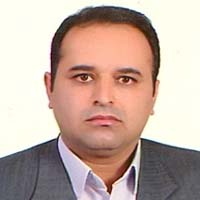Study of 74 Ilkhanid Coins of Hamadan Museum belonging to Abu Sa’id government (Minted in Hamadan, Tabriz and Soltanieh) Using X-ray Fluorescence method
Author(s):
Article Type:
Research/Original Article (دارای رتبه معتبر)
Abstract:
Numismatic studies always provide researchers with useful and accurate information about the method of production and economic conditions and industrial developments in the field of coin minting. The study of the performance of the mints where these coins had been manufactured is in fact a study of these characteristics from another perspective. In the present study, the mints located in three cities of Hamadan, Tabriz and Soltanieh, given their importance, have been compared through physical and chemical study of the coins produced in these cities. For this reason, 74 Ilkhanid coins from the time of Sultan Abu Sa’id Bahador Khan were selected from these three mints. Descriptive and analytical methods have been used in the present paper and also the non-destructive pXRF test method has been used for elemental analysis of the coins. This analysis seeks to answer these questions: 1) What pattern did the mints of the Abu Sa’id era follow in manufacturing the diameter and weight of the coins, and what was the relation of this possible pattern to the specific patterns of the central government? 2) What information could be gained from laboratory study of elements of these coins by the pXRF instrument, about the political and economic conditions prevailing at that time? The experimental results of the studied coins show that during the reign of Abu Sa’id, the coins were minted in almost similar sizes. The implementation of similar texts and symbols indicates that the coins were minted under a specific pattern. The slight change in the percentage of silver in the coins can be interpreted as political and economic stability during this period. Examination of these coins reveals that the coin number 68 is counterfeit. Also, observation of arsenic in some coins shows that the temperature required to prepare the initial sheets for coinage was lower than the evaporation temperature of arsenic.
Keywords:
Language:
Persian
Published:
Iranian Archaeological Research Journal, Volume:12 Issue: 34, 2023
Pages:
271 to 293
magiran.com/p2530817
دانلود و مطالعه متن این مقاله با یکی از روشهای زیر امکان پذیر است:
اشتراک شخصی
با عضویت و پرداخت آنلاین حق اشتراک یکساله به مبلغ 1,390,000ريال میتوانید 70 عنوان مطلب دانلود کنید!
اشتراک سازمانی
به کتابخانه دانشگاه یا محل کار خود پیشنهاد کنید تا اشتراک سازمانی این پایگاه را برای دسترسی نامحدود همه کاربران به متن مطالب تهیه نمایند!
توجه!
- حق عضویت دریافتی صرف حمایت از نشریات عضو و نگهداری، تکمیل و توسعه مگیران میشود.
- پرداخت حق اشتراک و دانلود مقالات اجازه بازنشر آن در سایر رسانههای چاپی و دیجیتال را به کاربر نمیدهد.
In order to view content subscription is required
Personal subscription
Subscribe magiran.com for 70 € euros via PayPal and download 70 articles during a year.
Organization subscription
Please contact us to subscribe your university or library for unlimited access!




